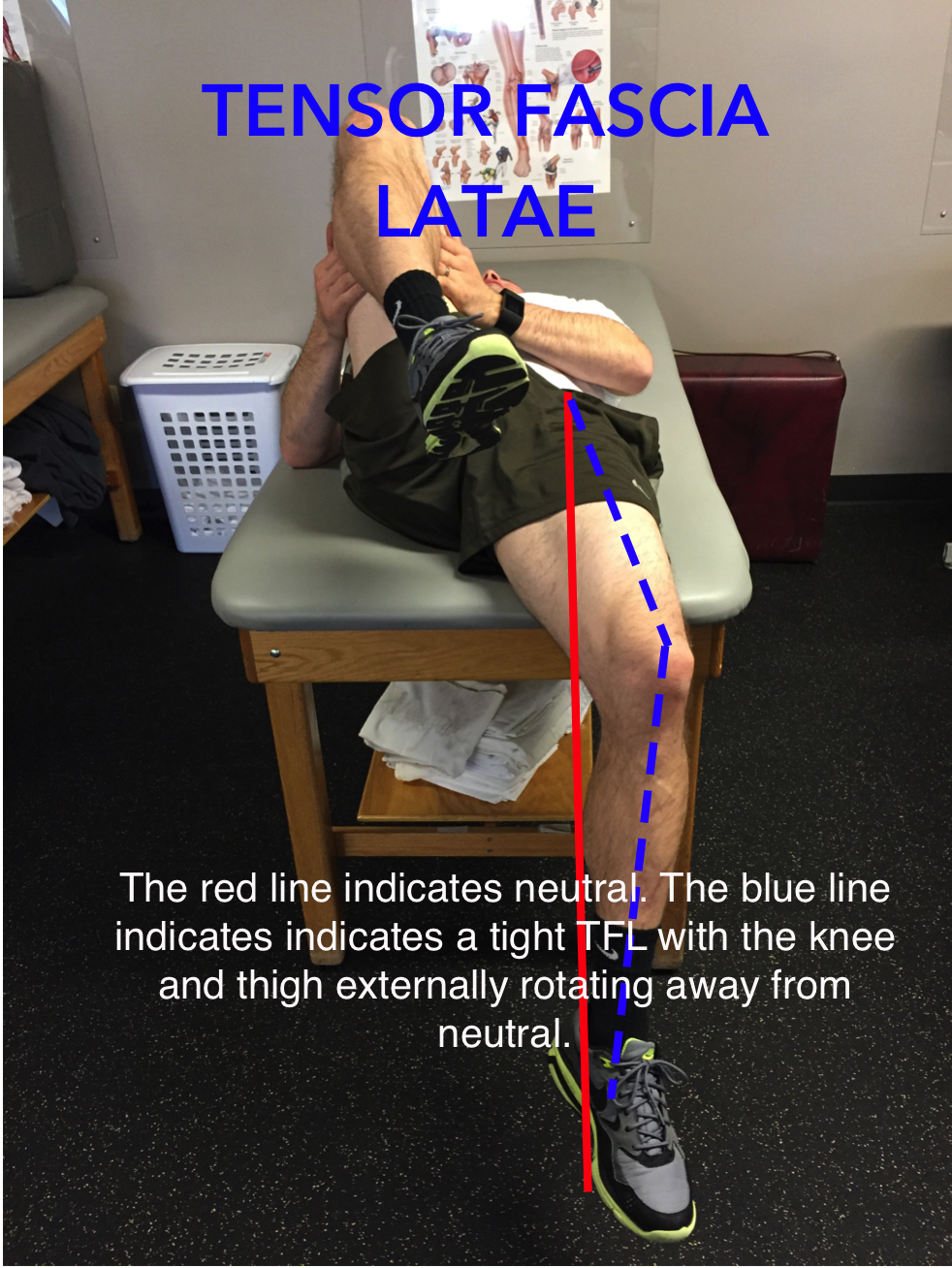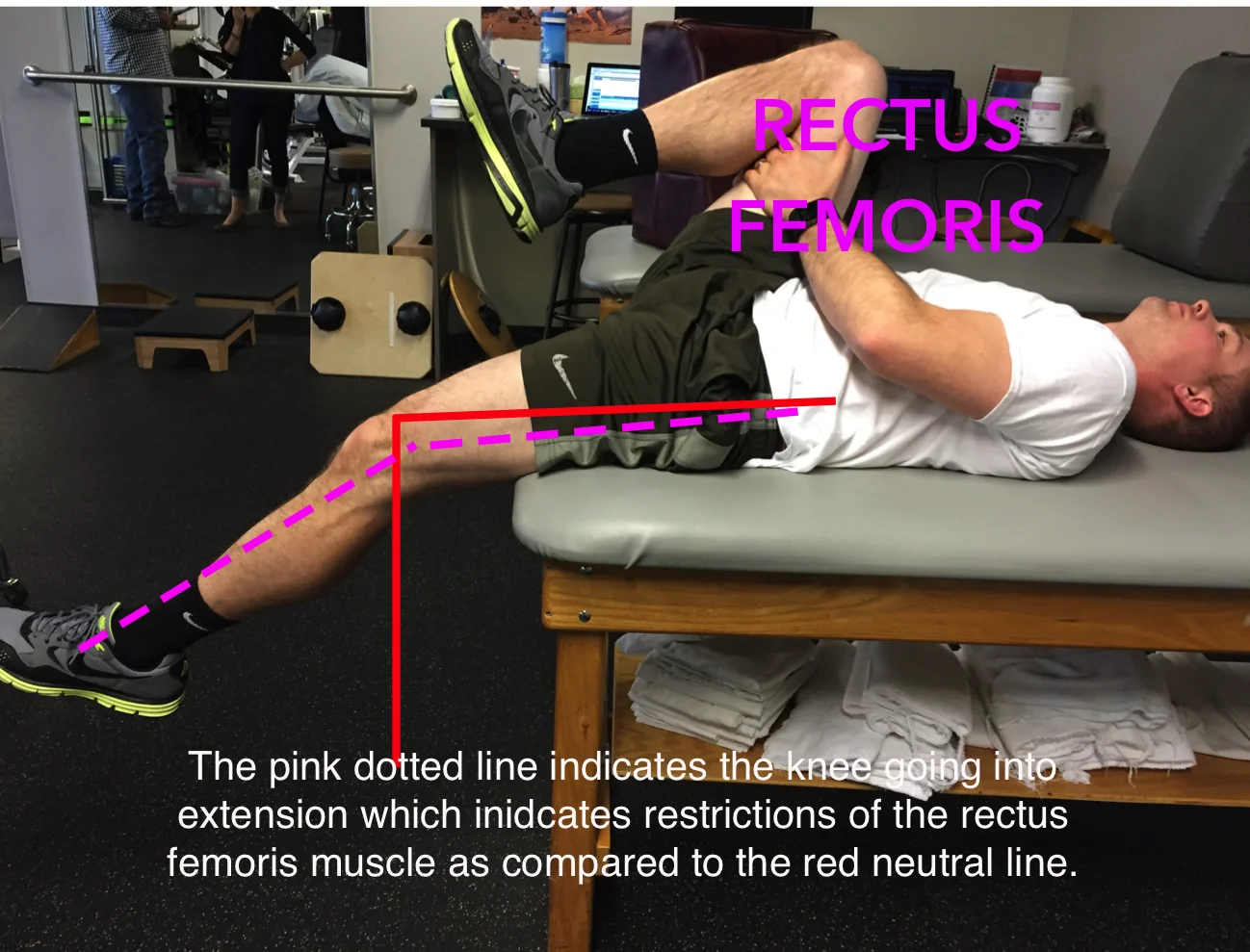tfl part 1: self-assessment
Are you someone who struggles with hip or knee pain on or off the bike? Have you been diagnosed with "IT band syndrome"? Stop torturing your iliotibial band (IT-band) with a foam roller and LISTEN UP. Tensor fasciae latae (TFL) is not just a difficult term to say it is a difficult muscle. In fact, TFL can be a big problem early in the season for those of us who have been cross training (running, swimming, or doing our Navy Seal training). It is likely also problematic for those who have been off of the bike since the first flake of snow…
Shown above: Soft tissue massage to tensor fasciae latae (TFL).
Why
TFL tends to be a bit overbearing. Meaning the body over utilizes it in certain cases such as:
- Weakness of gluteus minimus and medius
- Limited hip range of motion
- Weakness of hip extensors (TFL works because other muscles do not)
- Femoral anteversion (the femur drops into internal rotation and adducts/ "knock knee" position)
- Overutilization of vastus lateralis (quadriceps muscle/outside of thigh)
- Lumbar spine dysfunction
- Limited hip mobility
- History of knee injury requiring TFL to work overtime for stabiity
What/when
These problems are typically made worse during weight bearing activities as the TFL is responsible for stabilizing the knee and pelvis when the opposite foot is raised off of the ground or when on an unstable surface. If you take a tight and overbearing TFL into the cycling season you could end up with big problems. You may find that you have recurring knee or hip pain each year or develop it after cross-training or running. A tight TFL alone may not be problematic but when mixed with bike fit problems it is a season ending injury waiting to happen. Traditionally, the TFL is ignored when it comes to cycling, it is time that stops!
Where
Anatomically, TFL is located in the anteriolateral (front and side) of the thigh connecting the pelvis to the femur (thigh). TFL attaches the Iliotibial band (ITB) at the anteriolateral portion of thigh and inserts proximal to the lateral femoral condyle (thigh bone). The ITB runs the length of the side of the thigh and is known to be a problematic tissue for many folks. ITB is the most direct tissue relationship connecting the TFL muscle to the knee. Get the picture? Think of the TFL as the Wizard in "The Wizard of Oz". It is an honorary little thing up to no good, perched up in the hip blaming everything on IT band and friction. It's time to pull back the curtain.
Be Responsible
Take on this TFL self diagnosis project responsibly. Try the simple test below to determine if you are a victim of the Wizard TFL. If this information speaks to you or the test below is indicative of a tight TFL, do yourself a big one and consult with a qualified health care professional! As with any medical advice you read on the internet this is not specific to you and should be interpreted accordingly, unless of course you yourself are a qualified health care professional.
Test Yourself
Introducing the Thomas test for testing the tensor fascia latae and as a bonus you can learn about the iliopsoas, rectus femoris and sartorius (not shown below) which also relate to knee pain.
Negative test: If you are able to go through full range of motion (as shown in picture below) and the lower back and sacrum remain on the table. The pelvis can tilt only 10° and the hip can extend 10°. The hip remains in neutral and the thigh is resting against the table with the knee in 90° (like a perfect "L"). Basically, if you look like the picture below.
Positive test: You may find that you are restricted in multiple ranges of motion of either the hip and knee. The pictures and descriptions shown above should help to determine which structure/s may be involved. Either watch yourself in a mirror or have someone else snap a picture with your phone. Take the pictures from both the front and sides so you can check the position of your back, pelvis, hip and knee. Happy testing and feel free to shoot me your images for further review.
Stay Tuned
After careful consideration this will be a 3 part "Tackle the TFL" write-up. Coming soon are 2/3 and 3/3 for a bit more guidance. In the mean time consider that knowledge is powerful and dangerous. If you find that you are positive for the Thomas test shown above, take responsible action. If you are even more confused by your knee, hip or back pain then leave a comment below or shoot me an email at natalie@pedalfitpt.com.
Caution about the Thomas test
It is important to remember that this test is not intended to diagnose a problem as research shows that is not the intention of this test. Instead, the test is an easy way to perform a self assessment. Use this test to identify restrictions and then re-test after you have addressed the issue. If you do not find the relief you are looking for then there is likely an underlying cause of the restrictions such as: lower back dysfunction, hip impingement, patello-femoral pain syndrome, among others. This means that something else is causing these muscle to tighten up. Reducing muscle restrictions will then only be temporary until you address the underlying cause.





